Experience India and immerse yourself in discovery!
Engage all of your senses as you explore a country of intense vibrancy, shimmering maharajah palaces, architectural wonders, exotic nature, tantalizing cuisine and rich cultural diversity.
However, this country’s most valued treasure is its warm and welcoming people, with famous personalities, such as Mahatma Gandhi, Mother Teresa and Rabindranath Tagore to name a few who have inspired millions around the world.
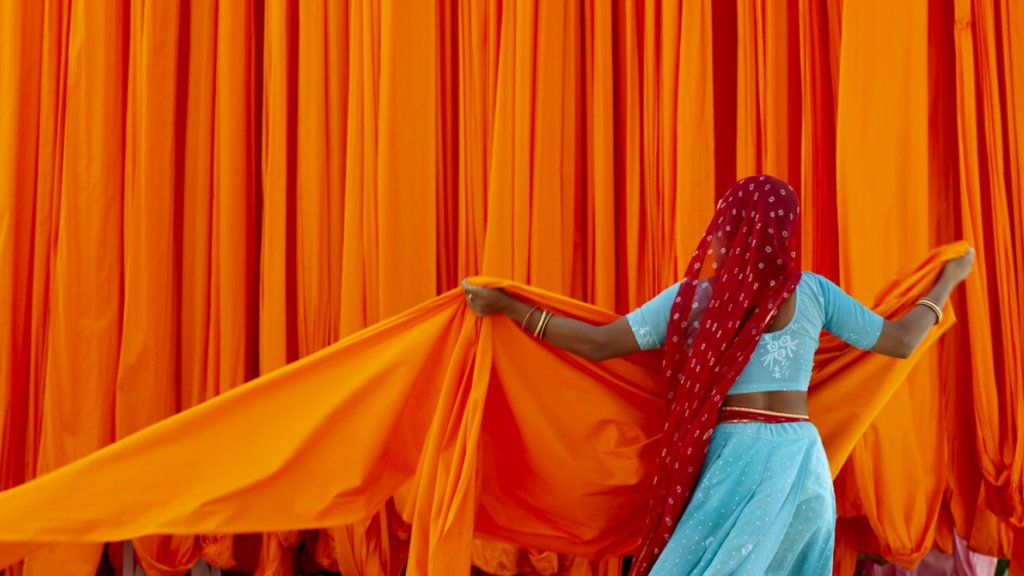
India
General Information
Brief Modern History
India is one of the oldest civilizations in the world and rich with cultural heritage. It has achieved all-round socio-economic progress during the last 62 years of its independence. India has become self-sufficient in agricultural production and is now one of the top industrialized countries in the world. India wrested its independence from Britain in 1947 after a long freedom struggle led largely by the Indian National Congress and its visionary leaders, especially, Mahatma Gandhi. From 1920, the freedom movement leaders began highly popular mass campaign against the British using largely peaceful methods. India’s acquisition of independence resulted in the formation of two countries, India and Pakistan.
Source by India portal & India.gov National Portal
General Facts:
Size (land area): 3,287,263 sq km (1,269,219 sq mi) is the 7th largest country in the world and slightly smaller than the USA
Population: 1,205,073,612 (July 2012 est.), number 2 in the world in comparison and is divided into the following ethnic groups: Indo-Aryan 72%, Dravidian 25%, Mongoloid, unspecified 3%
Border Countries: Southern Asia, bordering the Arabian Sea and the Bay of Bengal, between Burma and Pakistan.
Elevation Extremes: lowest point: Indian Ocean 0 m highest point: Kanchenjunga 8,598 m (28,210 feet)
Languages: Hindi 41%, Bengali 8.1%, Telugu 7.2%, Marathi 7%, Tamil 5.9%, Urdu 5%, Gujarati 4.5%, Kannada 3.7%, Malayalam 3.2%, Oriya 3.2%, Punjabi 2.8%, Assamese 1.3%, Maithili 1.2%, other 5.9%
Note: English enjoys the status of subsidiary official language but is the most important language for national, political, and commercial communication; Hindi is the most widely spoken language and primary tongue of 41% of the people; there are 14 other official languages: Bengali, Telugu, Marathi, Tamil, Urdu, Gujarati, Malayalam, Kannada, Oriya, Punjabi, Assamese, Kashmiri, Sindhi, and Sanskrit; Hindustani is a popular variant of Hindi/Urdu spoken widely throughout northern India but is not an official language.
Entry Requirements: All U.S. citizens need a valid passport and valid Indian visa to enter and exit India for any purpose. Visitors, including those on official U.S. government business, must apply for visas at an Indian Embassy or Consulate abroad before entering the country. Visas are not available upon arrival for U.S. citizens. If you don’t have a valid passport and visa you may be immediately deported. The U.S. Embassy and Consulates in India cannot assist you if you arrive without proper documentation.
Citizens of other nationalities should contact the Indian Embassy or Consulate for updated entry information.Proof of yellow fever immunization is required by Indian officials for travelers coming from infected areas.
Source: The World Factbook
When to Travel?
Climate plays a key factor in deciding when to visit India and the climatic conditions in the far north are very different to those in the extreme south.
In general India’s climate is defined by three seasons – the hot, the wet (monsoon) and the cool. The most pleasant time to visit most of the country is during the cooler period of November to mid-February, although there are marked regional variations.
Festivals:
Apart from the weather, the timing of certain festivals or special events may also influence when you wish to visit.
Pushkar Camel Fair
Usually in November, depending on the cycle of the moon.
Where: Rajasthan
When: 2012-November 20-28 , 2013-November 9-17)
An astonishing 50,000 camels converge on the tiny desert town of Pushkar, in India's state of Rajasthan, for the annual Pushkar Fair. For five days, the camels are dressed up, paraded, shaved, entered into beauty contests, raced, and traded. A huge carnival is held, with an array of musicians, magicians, dancers, acrobats, snake charmers and carousel rides to entertain the crowd. You may want to enjoy this dazzling event from a hot air balloon
.
Jaipur Elephant Festival
The Jaipur Elephant Festival takes place on Holy eve each year.
When: 26th March, 2013
Where: Jaipur, Rajasthan
This is a terrific way to start to the Holi celebrations! Rajasthan is more than camel festivals. Jaipur, with its royal heritage, has plenty of prized elephants. On the eve of Holi each year, they're groomed and decorated to perfection, and paraded around the city. There are also elephant polo matches! The sport has a long and distinguished history in Jaipur. Not to be missed is the tug of war between elephants and people!
Holi festival
Usually on the day after the full moon in March each year. You'll find Holi festivities taking place in most areas of India, but It will happen a day earlier in parts of eastern India, such as West Bengal.
Where: In most areas of India (a day earlier in parts of eastern India, such as West Bengal).
When: 2013-March 27, 2014-March 17
The Holi festival commemorates the victory of good over evil. Holi got its name as the "Festival of Colors" from Lord Krishna, a re-incarnation of Lord Vishnu, who liked to play pranks on the village girls by drenching them in water and colors. This is a carefree festival that’s great fun to participate in if you don’t mind getting wet and dirty.
Ganesh Chaturthi
Usually on the fourth day after new moon in the Hindu month of Bhadrapada. It is celebrated for 11 days (ending on September 11), with the biggest spectacle taking place on the last day called “Ananta Chaturdasi” day.
Where: Mumbai
When: 2012, Ganesh Chaturthi is on September 19 (Ananta Chaturdasi on September 29)
2013, Ganesh Chaturthi is on September 9 (Ananta Chaturdasi on September 19).
This spectacular festival honors the birth of the beloved Hindu elephant-headed god, Lord Ganesha, popularly worshiped for his ability to remove obstacles and bring good fortune. One of the best places to experience the festival is in the city of Mumbai, where around 10,000 statues of Lord Ganesh are displayed at various locations in the city. On Ananta Chaturdasi (the last day), the statues are paraded through the streets, accompanied by much singing and dancing, and then immersed in the ocean or other bodies of water. In Mumbai alone, more than 150,000 statues are immersed each year!
Travel Highlights
The North
Himalayas, the world's highest mountain chain and Nepal as its neighbouring country, dominate India's northern border. Following the sweeping mountains to the northeast, its borders narrow to a small channel that passes between Nepal, Tibet, Bangladesh, and Bhutan, then spreads out again to meet Burma in the "eastern triangle”. North India is the country's largest region begins with Jammu and Kashmir, with terrain varying from arid mountains in the far north to the lake country and forests near Srinagar and Jammu. Moving south along the Indus river, the North becomes flatter and more hospitable, widening into the fertile plains of Punjab to the west and the Himalayan foothills of Uttar Pradesh and the Ganges river valley to the East. Located between these two states is the capital city, Delhi.
Agra - The Saga of Love
Agra is an ancient city, mentioned in the Mahabharata and came into the limelight during the reign of the Mughals. It is famous as being home to one of the Seven Wonders of the World-the Taj Mahal. The Taj is a monument of such incredible elegance that it is considered synonymous with beauty itself.
Ajmer - A place of divinity for people of all faiths
Founded in the seventh century by Ajaipal Chauhan, Ajmer derives its name from Ajaymeru, the invincible hill, at the foot of which the city stands today. Surrounded by the Aravalli mountain range, Ajmer is an oasis located between green hills.
Ajmer is a popular pilgrimage; the Dargah Sharif – the tomb of the Sufi Saint Khwaja Moinuddin Chisti is revered by the Muslims.
Ajmer is also the base for visiting Pushkar, the abode of Lord Brahma; Pushkar Lake is a sacred spot for the Hindus. During the month of Kartik (October/November) devotes throng in large numbers here to bathe in the sacred lake.
Allahabad - The Kumbh-City
A city of many dimensions is what befits a description of Allahabad. In addition to being a major pilgrimage center, the city has played an important part in the formation of modern India.
Hindu mythology states that Lord Brahma, the creator god, chose a land for 'Prakrishta Yajna'. This land, at the confluence of three holy rivers - Ganga, Yamuna and Saraswati, blessed by gods, came to be known as 'Prayag' or 'Allahabad'.
Foreseeing the sanctity of the place, Lord Brahma also called it as 'Tirth Raj' or 'King of all pilgrimage centers’.' The Scriptures - Vedas and the great epics - Ramayana and Mahabharata, refer to this place as Prayag.
Centuries followed, Allahabad became the headquarters of North Western Provinces, after being shifted from Agra. Well preserved relics of the British impact include the Muir College and the All Saints Cathedral.
Many important events in India's struggle for freedom, took place here - the emergence of the first Indian National Congress in 1885 and the beginning of Mahatma Gandhi's non-violence movement in 1920 are just a couple of examples.
Almora - A Charming town with spectacular views of the Himalayas
Situated in the Kumaon Hills, Almora is a charming town is known for its pleasant climate and stunning spectacles provided by nature. It is perched atop the long saddle shaped ridge of the Kashaya hill.
It is surrounded by the gentle, rolling hills of Kumaon on three sides, and its northern front affords a breathtaking view of the Trishul Peaks.
Almora is also the cultural and social hub of the Kumaon region. It was once the capital of the Chand dynasty and before that was ruled by the Katyuri kings.
Amarnath - Adobe of Lord Shiva in the snowy Himalayas
Located in one of the world’s most incredible landscapes of Lidder Valley in Kashmir, the cave shrine of Shri Amarnath is situated at an altitude of 3680 meters (12,100 ft). Flanked by breathtaking snow-clad capped peaks, this Shiva shrine provides a wonderful opportunity to soak in the sacred energies of the Himalayas.
Each year in the month of Shravan (July-August) when the moon is full, thousands of yatris, as pilgrims are called, congregate here to worship a naturally formed ice Lingam, symbol of Lord Shiva.
The waxing and waning of the Lingam with the moon has remained a world marvel. According to popular belief it reaches the maximum height on the puranmashi (full moon) of Shravan which is the main day for Darshan.
Amritsar - Seat of Sikh faith, history and culture
Amritsar, literally a Pool of Nectar, derives its name from Amrit Sarovar, the holy tank that surrounds the splendid Golden Temple. Guru Ramdas, the fourth Guru of the Sikh faith, founded Amritsar in 1579. He constructed a pool on land gifted by the Mughal Emperor Akbar and called it Amritsar.
Home to the world famous Golden Temple, the 400-year-old city of Amritsar is the most important seat of Sikh history and culture.
One of the most poignant memorials of free India -- Jallianwala Bagh – is also located in the city. Amritsar district was once a part of the vast area covered by the Indus valley Civilization during the early period of history.
Ayodhya - A popular pilgrim center
Ayodhya is located on the right bank of the river Saryu, and is within sacred precinct and a popular pilgrim center.
This town is closely associated with Lord Rama, the seventh incarnation of Lord Vishnu.
The ancient city of Ayodhya, according to the Ramayana, was founded by Manu, the law-giver of the Hindus. For centuries, it was the capital of the descendants of the Surya dynasty of which Lord Rama was the most celebrated king.
Bharatpur - One of India’s most spectacular water bird sanctuaries
Bharatpur, founded by Maharaja Suraj Mal in 1733 and located in the Brij region, was once a well-planned and well-fortified city, and the capital of Jat kingdom ruled by Sinsinwar Maharajas Bharatpur.
Today, it is famous for the Keoladeo National Park, which is named after the temple of Lord Shiva situated inside the park.
The Sanctuary was declared a National Park in the year 1982 and entered the UNESCO World Heritage list in 1985. Once this was a shooting reserve of the royalty but is today perhaps the most spectacular water-bird sanctuary in India.
Delhi - Tale of a Royal City
No other city in the world is like Delhi, the capital of India. One of the oldest cities in the world, Delhi has an excellent old town ambience in Old Delhi, and is modern in New Delhi.
Stately and historic, the city is one of the undisputed highlights of the country. An array of historical sites including World Heritage Sites of Red Fort, Humayun’s Tomb and Qutub Minar rests amongst other several historical treasures in Delhi’s possession.
The seamless blend of old and new worlds makes for a fascinating exploration of this metropolis. The city is normally the first port of call for those planning to visit Northern India.
Jaipur - “The Pink City”
Jaipur, dubbed "the Pink City" after the color-wash of its old city’s walls, is indeed a visual treat.
The city, which is the Holy Grail of Indian tourism, boasts its assembly of world-renowned monuments.
The monuments which draw the largest crowds to Jaipur are the Palace of Winds or Hawa Mahal, Jai Singh's City Palace and Jantar Mantar Observatory, built by the city's founder, Maharaja Sawai Jai Singh II, a man famed for his talents as a politician, astronomer, and mathematician.
Other attractions of interest in the capital of Rajasthan are Ram Niwas Bagh and Govindji Temple, Ram Niwas Bagh, the city garden, houses Albert Hall (Central Museum).
Ladakh - The land of endless discovery
Set in Himalayan mountain splendor, Ladakh is an enchanted land.
The majestic mountains and pristine valleys, coupled with the vibrancy of its cultural life, makes Ladakh one of the last undiscovered destinations.
The iconic sight of Hemis Monastery, built before the 11th century by King Singge Namgyal in the grand tradition of Tibetan architecture is surrounded by natural wonder.
This is an exceptional destination for adventurous traveler as this area offers a wide array of trekking routes.
Udaipur - City of lakes
Udaipur is often called ‘Venice of the East’. It is also the ‘city of lakes’. The Lake Palace (Jag Niwas) located in the middle of Pichola Lake is a fine example of architecture and cultural marvel.
The grand City Palace on the banks of the lake along with the Monsoon Palace (Sajjan Garh) on the hill above enhances the beauty of this magnificent city.
Udaipur is also the center for performing arts, crafts and its famed miniature paintings. Udajpur host the popular Shilpgram festival in the New Year.
Varanasi - The city of Temples and Ghats
Varanasi or Banares is the ultimate travel destination of India; and has been for centuries.
Considered to be one of the oldest living cites in the world, Varanasi attracts visitors who come to this mystical city for a brush with the divine. Legend has it that that anyone who dies here will be liberated from the cycle of life and birth, making it one of the holiest cities for Hindus.
Suggested Journeys
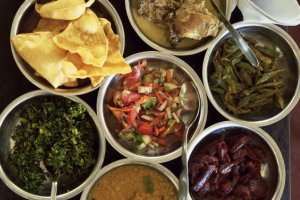 India - The Culinary Journey
India - The Culinary Journey12 Days / 11 Nights • Special locally Escorted Departure - Please Inquire
Many of the world’s destinations can claim life changing experiences for the traveler, when describing the offerings of India there are no truer words. On this luxurious journey, we will tell you the story of India through culinary experiences designed to teach, to tantalize and to inspire. This will be an incredible tour for the foodie looking to nourish the body and soul. All of your senses will be engaged and this particular tour has been crafted to expose you to India's culture, history, and passion.
Featuring New Delhi, Agra, Fatehpur Sikri, Jaipur, Rohet Garh & Udaipor
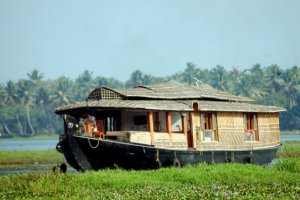 Signature Kerala
Signature Kerala9 Days / 8 Nights • Saturday arrivals in Cochin, India - Year-round
Explore the tropical state of Kerala, at the Malabar Coast. Referred as the “Spice Garden of India”, Kerala is a state with a beautiful variety of landscapes such as palm-lined beaches, thick jungles, plantation-covered hills and enthralling rivers and lakes. The National Geographic Traveler has quoted Kerala as India’s most verdant state with one of the world’s 50 “must see” destinations. “The god who made Kerala had a green thumb”, true to the popular Malayali saying, Kerala’s rich resources have long attracted visitors from across the oceans.
Journey by private car featuring Cochin, tea plantations of Munnar, Periyar Wildlife Santuary in Thekkady and the Kerala backwater canal system.
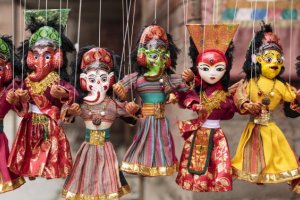 Treasures of India & Nepal: A Cultural Adventure
Treasures of India & Nepal: A Cultural Adventure10 Days / 9 Nights • Daily Arrival in Delhi, year-round
Delve into the beauty of India and Nepal while connecting with friendly people along the way. From iconic attractions like the Taj Mahal to colorful markets tucked amid bustling city streets, this 10-day tour is for those who crave both cultural adventure and fine comfort.
A Journey by Private Car and Guide, featuring Delhi, Kathmandu, Chitwan, Pokhara, Agra (Taj Mahal) & Jaipur
Featured Properties
 Kumarakom Lake Resort, Kerala
Kumarakom Lake Resort, KeralaParadise on earth, dedicated to to perfect balance of nature and mankind coexistence
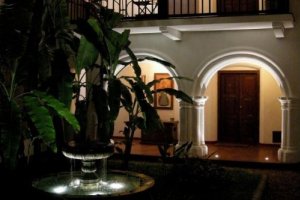 Old Harbour Hotel, Cochi, Kerala
Old Harbour Hotel, Cochi, KeralaAt the heart of ancient Fort Cochin, Kerala, a place that exudes history and culture, is the 'Old Harbour Hotel'. A 300 year-old building that has for long been a heritage monument of this town, now reopened as a boutique hotel.
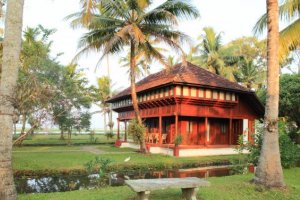 Coconut Lagoon, Kerala
Coconut Lagoon, KeralaSituated on the shore of the Vembanad Lake, the Coconut Lagoon is a tropical paradise, accessible only by a boat ride, through the backwater canal system. The resort is the perfect base for the exploration for the famous backwater of Kerala, as well as an excellent option for an Ayuverdic Wellness Center.
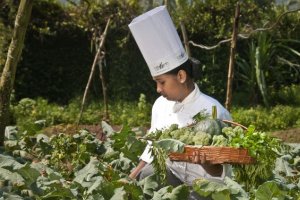 Spice Village, Thekkady, Kerala
Spice Village, Thekkady, KeralaSpice Village is a resort located in the hilly tea and spice growing region of Thekkady and it is couple of minutes from the entrance gate of the Raft at the Periyar Lake. The resort is constructed like a tribal village and has several varieties of spices and fruits growing on its sprawling grounds. Its location, within minutes away from the entrance gate of the Periyar Tiger Reserve, makes it the perfect gateway to exploring the area.
Photo Gallery
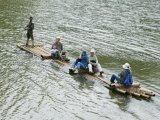 Raft at the Periyar Lake, Thekkady, Kerala
Raft at the Periyar Lake, Thekkady, Kerala The Taj Mahal, Agra, India
The Taj Mahal, Agra, India India, Rajasthan, local woman working at a Sari factory
India, Rajasthan, local woman working at a Sari factory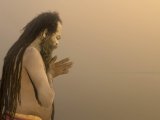 Varanasi, Sadhu prays to the rising sun at dawn
Varanasi, Sadhu prays to the rising sun at dawn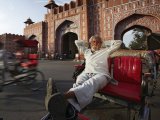 Jaipur, Rickshaw driver relaxing at Ajmer Gate
Jaipur, Rickshaw driver relaxing at Ajmer Gate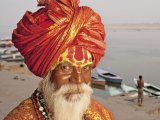 Varanasi
Varanasi Women at the Fort of Agra, by SF Castiglione
Women at the Fort of Agra, by SF Castiglione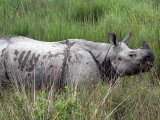 One Horned Rhino Assam - India, by Diganta Talukdar
One Horned Rhino Assam - India, by Diganta Talukdar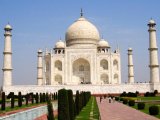 The Taj Mahal, Agra, India
The Taj Mahal, Agra, India Nishi Tribal man Arunachal Pradesh - India by Diganta Talukdar
Nishi Tribal man Arunachal Pradesh - India by Diganta Talukdar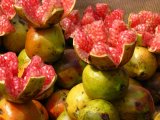 At the Market, by Mackay Savage
At the Market, by Mackay Savage